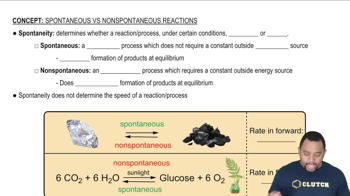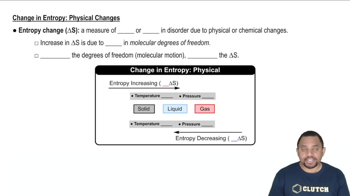Textbook Question
The normal boiling point of bromine is 58.8 °C, and the standard entropies of the liquid and vapor are S°[Br2(l) = 152.2 J/(K*mol); S°[Br2(g) = 245.4 J/(K*mol). At what temperature does bromine have a vapor pressure of 227 mmHg?
 McMurry 8th Edition
McMurry 8th Edition Ch.18 - Thermodynamics: Entropy, Free Energy & Equilibrium
Ch.18 - Thermodynamics: Entropy, Free Energy & Equilibrium Problem 134
Problem 134 Verified step by step guidance
Verified step by step guidance



The lead storage battery uses the reaction: (b) Calculate ∆G for this reaction on a cold winter's day (10 °F) in a battery that has run down to the point where the sulfuric acid concentration is only 0.100 M.